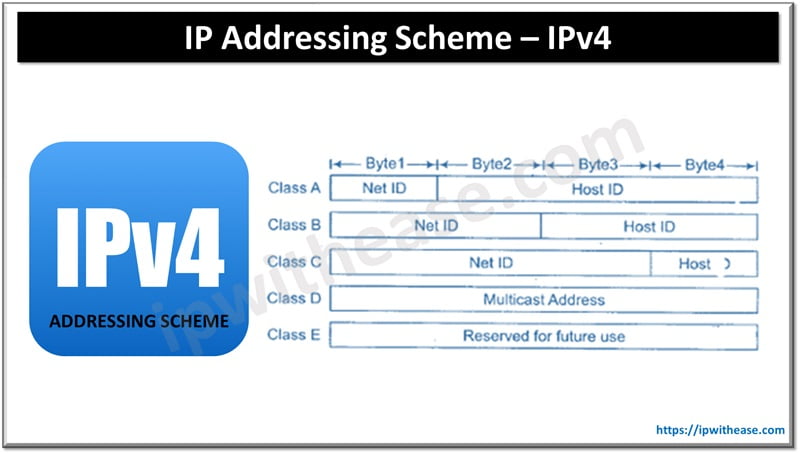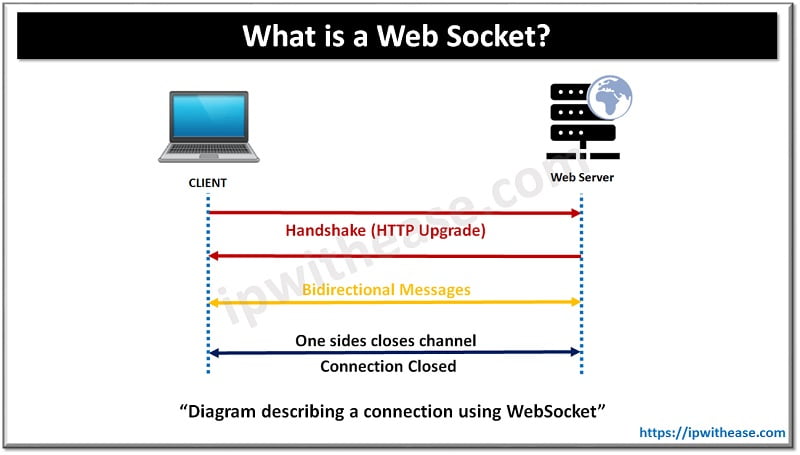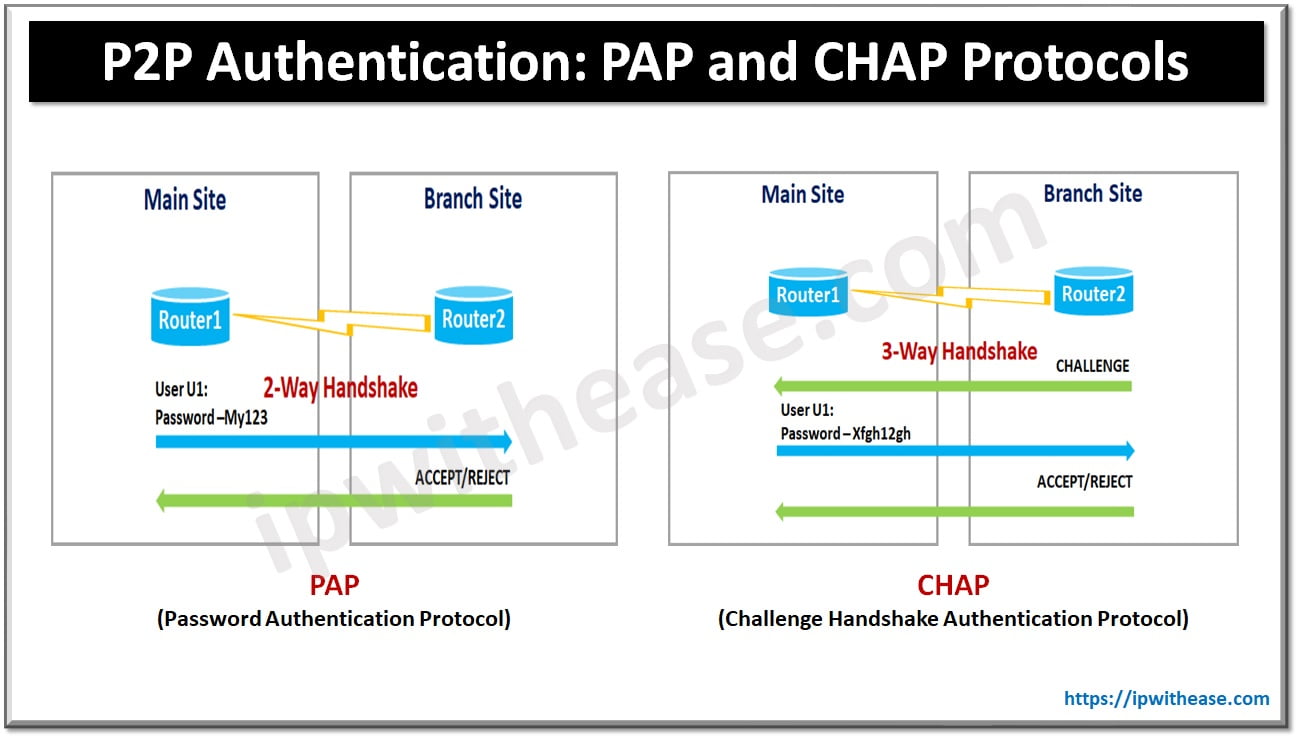Table of Contents:
IP Addressing Scheme plays a significant role in communication, scalability, security and easier management of a network. In this blog, we have discussed the concept and significance of IP addressing with special reference to IPv4.

What is IP Addressing Scheme?
IP address is an address that is used to uniquely identify a device on an IP network. IP address is made up of 32 binary bits. These binary bits can be further divided into network portion and host portion with the help of a subnet mask.
The 32 binary bits are broken into four octets of 8 bits each. Each octet is converted to decimal and separated by a period (dot).
The IP address is thus expressed in a dotted decimal format (for example, 192.18.80.200), where the value in each octet can range from 0 to 255 decimal (or 00000000 – 11111111 binary). You can check IPv4 address of your system in the dotted decimal format using online available tools simply by typing – what is my ipv4
IP Addressing Scheme in IPv4
Every device on internet has an address for the intercommunication among different devices. These addresses can be of various types like MAC or hardware address on OSI layer 2 (Data Link Layer) and IP address or logical address on OSI Layer 3 (Network Layer). These layer-3 addresses are used for routing & Switching, creation of logical paths between different nodes so that IP packets can be forwarded.
Here we are going to discuss the different classes & ranges of IP addresses and how these are defined. These classes are defined on the basis of different combinations of first 8 bits (First octet) out of the total 32 bits of IP address. Following are the different classes of IP addresses and the corresponding range. This will help you make an informed decision when examining IPv4 lease options. We will refer the following table showing the corresponding value of first 8 bits (in on mode)
| Bit’s Position | 1 | 2 | 3 | 4 | 5 | 6 | 7 | 8 |
| Decimal Value | 128 | 64 | 32 | 16 | 8 | 4 | 2 | 1 |
Class-A
In this class out of 32 bits only first 8 bits are assigned to the network part, hence it has default subnet mask of 255.0.0.0. In this class the first bit is reserved and is always kept off.
Lower range can be found out by keeping all the bits off (means the corresponding numerical value is not added)
| Bit’s Position | 1 | 2 | 3 | 4 | 5 | 6 | 7 | 8 | |
| Decimal Value | 0 | 0 | 0 | 0 | 0 | 0 | 0 | 0 | Total=0 |
Higher range can be calculated by turning all the bits on (except the 1st bit which is reserved as off)
| Bit’s Position | 1 | 2 | 3 | 4 | 5 | 6 | 7 | 8 | |
| Decimal Value | 0 | 64 | 32 | 16 | 8 | 4 | 2 | 1 | Total=127 |
Hence the IP range of this class should be 0-127 but 0.0.0.0 doesn’t represent a valid network and 127.0.0.0 to 127.255.255.255 is reserved for local host loop back to verify TCP/IP services diagnostic functions.
So the Valid IP range for class A is 1-126. Some examples are 10.x.x.x, 125.x.x.x, 79.x.x.x, 98.x.x.x etc.
Class-B
In this class first 16 bits are assigned to network part & so it has default subnet mask of 255.255.0.0. For range assignment first two bits are reserved, first bit always on and second bit always off.
Its lower range is 128 as last six bits are off
| Bit’s Position | 1 | 2 | 3 | 4 | 5 | 6 | 7 | 8 | |
| Decimal Value | 128 | 0 | 0 | 0 | 0 | 0 | 0 | 0 | Total=128 |
Its higher range is 191 as last six bits are on
| Bit’s Position | 1 | 2 | 3 | 4 | 5 | 6 | 7 | 8 | |
| Decimal Value | 128 | 0 | 32 | 16 | 8 | 4 | 2 | 1 | Total=191 |
So the range of class B is 128-191. Some examples are 130.x.x.x, 156.x.x.x, 178.x.x.x, 190.x.x.x.
Note: – In class B the range 169.254.0.0 -169.254.255.255 is reserved for APIPA (Automatic private IP addressing) and used when a computer doesn’t get any IP from DHCP server for various reasons.
Class-C
This class has 24 bits for network part and so its default subnet mask is 255.255.255.0. To assign the range first 3 bits are reserved, 1st & 2nd bits are always on and 3rd bit is always off.
Its lower range is 192 as last five bits are off.
| Bit’s Position | 1 | 2 | 3 | 4 | 5 | 6 | 7 | 8 | |
| Decimal Value | 128 | 64 | 0 | 0 | 0 | 0 | 0 | 0 | Total=192 |
Its higher range is 223 by putting last five bits on.
| Bit’s Position | 1 | 2 | 3 | 4 | 5 | 6 | 7 | 8 | |
| Decimal Value | 128 | 64 | 0 | 16 | 8 | 4 | 2 | 1 | Total=223 |
So the class C range is 192-223. Some examples are 200.x.x.x, 215.x.x.x, 221.x.x.x, 195.x.x.x.
Class-D
The range of this class is from 224-239 and can’t be allocated to hosts. This class is used for multicasting by various routing protocols. Some common examples are
224.0.0.5-Used by all OSPF routers
224.0.0.6-Used by OSPF DRs (Designated Routers)
224.0.0.9-Used by RIP-2
224.0.0.10-Used by EIGRP
224.0.0.12-Used by DHCP Server/Relay Agent
224.0.0.14-Used by RSVP encapsulation
224.0.0.18-Used by VRRP
224.0.0.22-Used by IGMP
Class-E
The range of this class is from 240-255 and is not meant for general use. These are typically used for experiments.
ABOUT THE AUTHOR

You can learn more about her on her linkedin profile – Rashmi Bhardwaj



